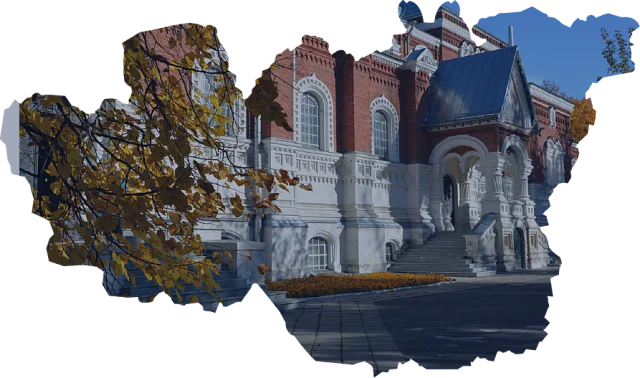Gus-Khrustalny
In 1756, on the Gus River, Akim Maltsov founded a crystal factory around which the settlement of Gus-Khrustalny subsequently grew.
In 1756, on the Gus River, Akim Maltsov founded a crystal factory around which the settlement of Gus-Khrustalny subsequently grew.
The city of Gus-Khrustalny is located 70 km from Vladimir and 260 km from Moscow.

The history of Gus-Khrustalny began in 1756. To prevent the destruction of forests in Central Russia, the Government adopted a Decree to close a number of enterprises located in less than 100 miles from Moscow. Among the enterprises being closed was the glass factory of Akim Maltsov in Mozhaisk district. Then, Maltsov built a new plant in the Meshchera region on the Gus river, where industrial workers from the previous enterprise were also transferred. Therefore, the inhabitants of the village initially differed in their worldview and lifestyle from the indigenous population of the region, this difference has remained to this day.
The new enterprise, the Gus Crystal Factory, subsequently gave its name to the city, which incorporated the location and occupation of its inhabitants. In 1849, the Gus plant was allowed to depict the state emblem of Russia on its products. In the 19th century, the plant fulfilled large orders of the Imperial court, was granted the highest awards at national and world exhibitions. In 1846, a paper-spinning weaving factory was built in the village.
The village at the plant was transformed into the city of Gus-Khrustalny in 1931. Today, Gus-Khrustalny is a large industrial, scientific and cultural centre of the Vladimir region, which has generally retained its specialisation as a glass-making city. The city is the organising centre of the Vladimir Meshchera, a special natural and cultural territorial complex located in the southwest of the Vladimir region.
INTRIGUING FACTS
1. The word 'Gus' in the name of the city refers us to the river Gus of the same name on which it stands. 'Khrustalny' (meaning 'crystal') comes from the Gus Crystal Factory located here. Until 1926, the city was called Gus-Maltsevsky in honour of Akim Maltsov, the founder of the crystal factory around which the city subsequently grew.
2. One of the main attractions of the city is the Maltsov houses. These are small stone houses for workers built in the 1860s through 1880s. They were built according to the model of Manchester houses. By 1913, about 400 standard one-storey stone houses had been built, and a lot of them have survived to this day.
3. St. George's Cathedral built in the style of ancient Russian architecture by L.N. Benois is a gem of the city. Inside you can see the Last Judgment by V.M. Vasnetsov. Now, the Crystal Museum is open in the cathedral.
4. In the city, there is a museum dedicated to the faceted glass familiar to everyone from childhood.
5. After returning from prison, Alexander Solzhenitsyn lived in the village of Miltsevo, Gus-Khrustalny district, in 1956–1957 and worked as a school teacher of mathematics and electrical engineering (physics) in the neighbouring village of Mezinovskoye. In Miltsevo, the writer rented a room from Matryona Zakharova, a local resident. His work Matryona's Place is based on the real life and death of this woman who lived an unhappy and unbearable life. In 2012, Matryona’s house burned down. In its place, based on photographs and stories of Matryona’s nieces, the new Matryona's place was reproduced. The old wooden school in Mezinovsky was destroyed, and the new three-storey building was erected to replace it. In 2003, the museum of literature and local lore named The Life and Work of A.I. Solzhenitsyn was established there.

